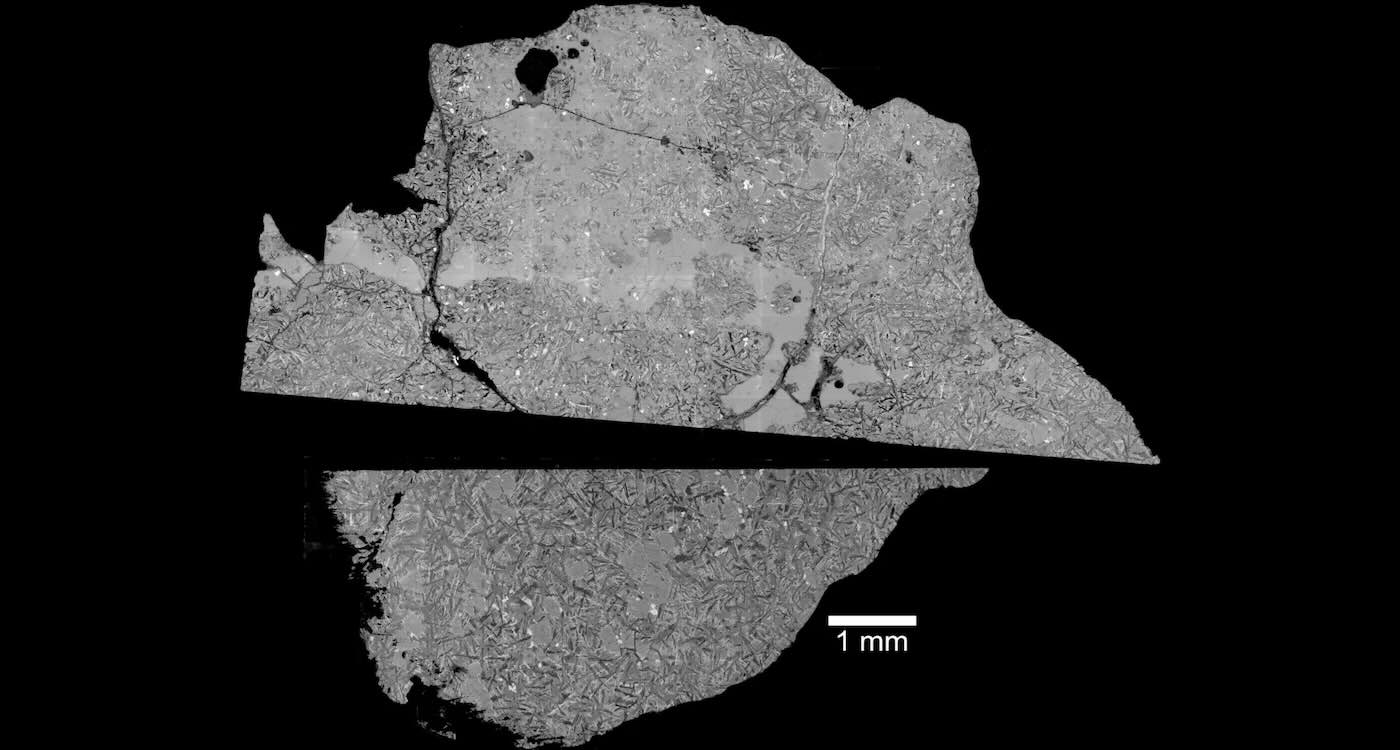2 Billion-Year-Old Moon Rock Found in Africa Plugs a Huge Gap in Lunar History

An ancient Moon rock that fell to Earth in Africa is rewriting what we know about lunar volcanoes. The rare meteorite with its unique chemical makeup bridges a billion-year gap in lunar rock samples, and suggests the Moon had internal heat sources that persisted for ages.
The 2.35 billion-year-old meteorite was discovered in Africa in 2023 and reveals that the Moon was volcanically active far longer than previously thought.
The research, presented this week at the world’s foremost geochemistry gathering, the Goldschmidt Conference in Prague, offers fresh insights into how the Moon’s interior evolved.
The analysis from the University of Manchester, UK, dates the rock’s formation to a period from which few lunar samples exist, making it the youngest basaltic lunar meteorite discovered on Earth.
Its rare geochemical profile sets it apart from those returned by previous Moon missions, with chemical evidence indicating it likely formed from a lava flow that solidified after emerging from deep within the Moon.
Dr. Joshua Snape, who presented the research before 4,000 attending delegates called the sample serendipitous.
“It just happened to fall to Earth and reveals secrets about lunar geology without the massive expense of a space mission,” he said in a media release.
“Lunar rocks from sample missions are fantastic in the insights they provide us, but they are limited to the immediate areas surrounding those mission landing sites.”
By contrast, this rock’s melted glassy pockets and veins suggests it was jettisoned to Earth after the impact of a meteorite or asteroid, which could have happened anywhere on the Moon’s surface.
“The age of the sample is especially interesting because it fills an almost billion-year gap in lunar volcanic history,” said Dr Snape. “It’s younger than the basalts collected by the Apollo, Luna and Chang’e 6 missions—but older than the much younger rocks brought back by China’s Chang’e 5 mission.”
LOOK SKYWARD: Two Meteor Showers Will Peak on the Same Night in July and Be Visible in the Southern US
Containing relatively large crystals of the mineral olivine, the rock is a volcanic type called olivine-phyric basalt. It contains moderate levels of titanium and high levels of potassium.
The Pb isotope composition of the rock – a geochemical fingerprint retained from when the rock formed – points to it originating from a source in the Moon’s interior with an unusually high uranium-to-lead ratio. These chemical clues may help identify the mechanisms that have enabled periods of ongoing internal heat generation on the Moon.
“Its age and composition show that volcanic activity continued on the Moon throughout this timespan, and our analysis suggests an ongoing heat generation process within the Moon, potentially from radiogenic elements decaying and producing heat over a long period.
“Moon rocks are rare, so it’s always interesting when we get something that stands out and looks different to everything else.”
DID YOU KNOW? ‘Starquakes’ Inside Universe’s Densest Objects May Have Seeded Earth with Large Amounts of Gold
“This particular rock provides new constraints about when and how volcanic activity occurred on the Moon.
“There is much more yet to learn about the Moon’s geological past, and with further analysis to pinpoint its origin on the surface, this rock will guide where to land future sample return missions.”
HAIL ‘SCIENCE BOY’: When Car’s Windshield is Smashed, Clever Son Spots Nearby Rock and Finds a Meteorite is the Culprit
The 311-gram meteorite (equaling around 11 ounces) is one of 31 lunar basalts officially identified on Earth, according to the researchers who were funded by the Royal Society. The team plans to publish their findings in full in a peer-reviewed journal later this year.
EDUCATE SPACE GEEK PALS By Sharing This on Social Media…






Please be good and do not spam. Thank you.